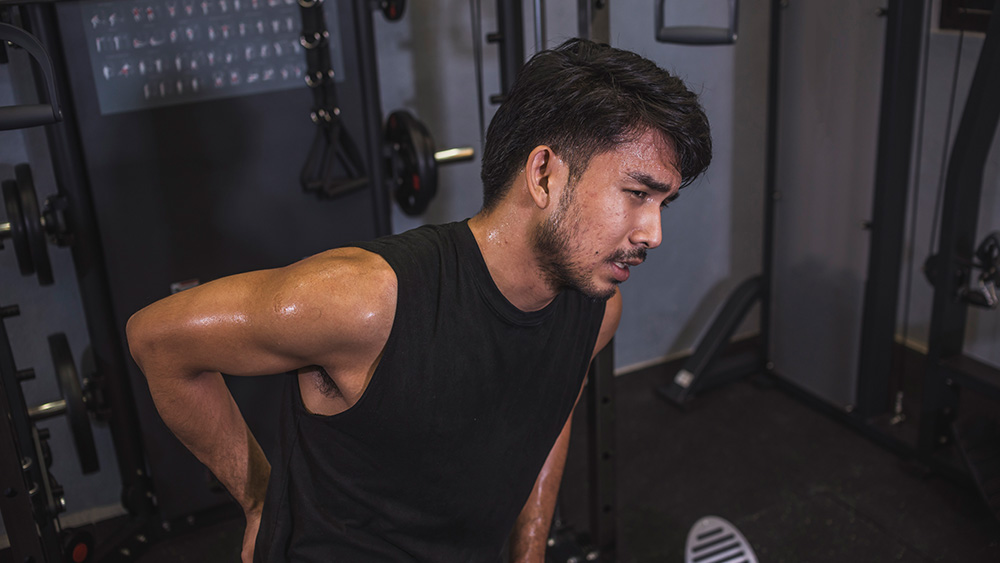Rebuilding Lives, Restoring Hope
Recovering from a major illness, surgery, or injury can be a challenging journey, but our inpatient rehabilitation services are here to help every step of the way. The Golisano Restorative Neurology & Rehabilitation Center is dedicated to providing comprehensive care for people recovering from a wide range of conditions, helping them build strength and confidence as they prepare to return to everyday life. Our state-of-the-art facility ensures that you or your loved one will receive the highest quality of care in a comfortable and supportive environment.
Our nationally recognized inpatient rehabilitation program provides a complete range of rehabilitative services to adults and children. We take an interdisciplinary approach, customizing each patient’s treatment plan for their specific needs.
Brain Injury Rehabilitation
Our brain injury rehabilitation program helps patients recover from traumatic brain injuries, concussions, infections, oxygen deprivation, tumors, hemorrhages, and other neurological impairments. We provide comprehensive therapy to improve cognitive function, mobility, and independence.
Cardiac Rehabilitation
Our cardiac rehabilitation program aids recovery from heart attacks, heart failure, left ventricular assistive device (LVAD) placement, heart transplant, and other cardiac conditions. Through monitored exercise, education, and lifestyle modifications, we help patients improve endurance, heart function, and overall heart health.General Medical Rehabilitation
Our general medical rehabilitation program supports patients recovering from complex medical conditions such as post-surgical complications, limb loss, joint replacements, Multiple Sclerosis (MS), Parkinson’s Disease, Guillain-Barre Syndrome (GBS), Amyotrophic Lateral Sclerosis (ALS), Cerebral Palsy (CP), and Encephalopathy. We provide therapy to improve strength, mobility, and overall function for individuals recovering from serious illnesses or injuries.
Pediatric Rehabilitation
Our pediatric rehabilitation program helps children recover from neurological, orthopedic, and developmental conditions, including cerebral palsy, traumatic injuries, and genetic disorders. Through age-appropriate therapy, we focus on improving motor skills, communication, and independence to enhance each child's quality of life.
Spinal Cord Rehabilitation
Our spinal cord rehabilitation program helps patients regain function and independence following spinal cord injuries, myelopathy, transverse myelitis, and other spinal conditions. We focus on mobility training, adaptive techniques, and strengthening exercises to enhance recovery and quality of life.Stroke Rehabilitation
Our stroke rehabilitation program supports recovery from ischemic and hemorrhagic strokes, focusing on improving mobility, speech, and daily living skills. We help patients regain strength and independence through specialized therapies designed for post-stroke challenges, including paralysis, coordination issues, and cognitive impairments.
Our Approach to Recovery and Rehabilitation
As a first step toward treatment, our highly skilled interdisciplinary team of physiatrists, advanced practice providers, residents, neuropsychologists, therapists, nurses, and other rehabilitation team members, evaluates each patient, thoroughly assessing their physical, cognitive, and behavioral functions. From there, a personalized and comprehensive treatment plan will be developed to address each patient’s specific challenges, helping to regain strength, function, and independence. Our focus is on maximizing functional outcomes and enhancing quality of life to ensure optimal results and support for a successful recovery. Our rehabilitative services include but are not limited to:
- Family education and support
- Activities of daily living (ADL) retraining
- Assistive technology and adaptive equipment training
- Balance and gait training
- Pain management and relief strategies
- Neuropsychology and emotional support
- Nutrition and wellness planning
- Language, communication, and cognitive retraining
We utilize evidence-based treatment tools such as body weight support training, Bioness Integrated Therapy System, Synchrony, Pattern Electric Neuromuscular Stimulation (PENS), Motomed, and Saebo Mas to maximize rehabilitation outcomes.

Since 1992, the Golisano Restorative Neurology & Rehabilitation Center has been accredited by the Commission on Accreditation of Rehabilitation Facilities (CARF) for Comprehensive Integrated Inpatient Rehabilitation, brain injury and stroke for children, adolescents, and adults. CARF accreditation signals our commitment to excellence in the services we provide.
Take a Virtual Tour
of Our Facility
Frequently Asked Questions
We see patients from age 12 months and up; we will consider admission for children under the age of 12 months on a case-by-case basis.
To be eligible for our program, the patient must:
- Have a referral from their physician
- Have an active medical condition, but be medically stable
- Be free from life support systems (such as ventilators)
- Require 24-hour rehabilitative nursing
- Be able to tolerate three hours of therapy per day, five days per week or 15 hours of therapy over seven days. Further decision for the level of care required is to be determined by the Physical Medicine & Rehabilitation team.
- Have the potential to return to a community setting
Our rehabilitation physicians will evaluate the patient at a local hospital, or review medical charts with the referral source to determine appropriateness for admission.
We accept patients with a spinal cord injury, complete or incomplete at the level of C-5 or lower; we will evaluate patients with injuries above C-5 on a case-by-case basis.
Once a patient is approved for admission into our program, our team will guide you through the process including medical insurance and disability claims, and will be available to help complete paperwork and answer questions.
The length of stay varies depending on the patient’s specific condition and progress. Our team will evaluate your recovery and create a personalized plan, providing regular updates.
Please see our Programs Report for additional length of stay information.
Yes, family members and caregivers play a crucial role in a patient's recovery and are welcome and encouraged to participate in therapies and program activities. Family involvement and participation further prepare the patient for a successful transition into the next step of the rehabilitation process and are vital in helping the patient reconnect with friends, neighbors, co-workers, and classmates as they progress and regain skills. Ability for caregivers to stay overnight to participate in the patients can be arranged. The Ronald McDonald House located on the Unity Hospital campus can be made available to the caregivers of our pediatric patients.
Our Center uses a collaborative, interdisciplinary approach for treatment. We work together as a team to evaluate, set goals, and provide the most advanced care in an attentive, compassionate setting. Your care team will include:
- Neuropsychologists who provide cognitive and behavior screening, support for adjustment to disability, and readiness to return to lifestyle activities.
- Occupational therapists who help you get the skills you need to get back to being independent with many things including activities of daily living.
- Physical therapists who specialize in helping you build strength, improve mobility, and decrease pain.
- Case managers who help families plan for return to the community, assist with navigating insurance and financial questions, connect with community supports, and more.
- Speech pathologists who assess and treat swallowing issues, communication, and thinking changes to maximize your functioning and safety.
- Recreational therapists who help you improve or maintain your physical, cognitive, social, emotional, and spiritual wellness.
- Spiritual care from on-call chaplains who can support you and your loved ones during treatment, no matter what denomination, faith or spiritual belief.
- Dietitians who will ensure your nutritional needs are met and help you with your preferences and help you and your family to understand your diet.
Coverage for inpatient rehabilitation services depends on your insurance plan. We recommend contacting your insurance provider for specific details, and our team can assist with verifying coverage.
When patients are ready to go home, they can be confident that they will have our continued support in the days and months ahead.
Your rehabilitation team will provide a detailed recovery plan, and can help coordinate rehabilitative needs, such as:
- outpatient rehabilitation services
- home care
- community support resources
- assistive equipment needs
- transportation
- education
- vocational training
If patients need to be discharged to an alternative level of care, such as a skilled nursing facility, our case manager assists with that process as well.
Our physicians, neuropsychologists, and therapists also continue to help coordinate with school or work for as long as needed following the patient's return home.
Yes, we offer tours of our facility to prospective patients and their families. Contact us at (585) 368-3222 to schedule a visit and meet our care team.
View our 2024 outcomes report to see the latest statistics on our numbers of patients, their ages, average length of stay, and more.
Get details on our services, therapy options, and eligibility criteria and learn how we can support your recovery with expert, personalized care.








